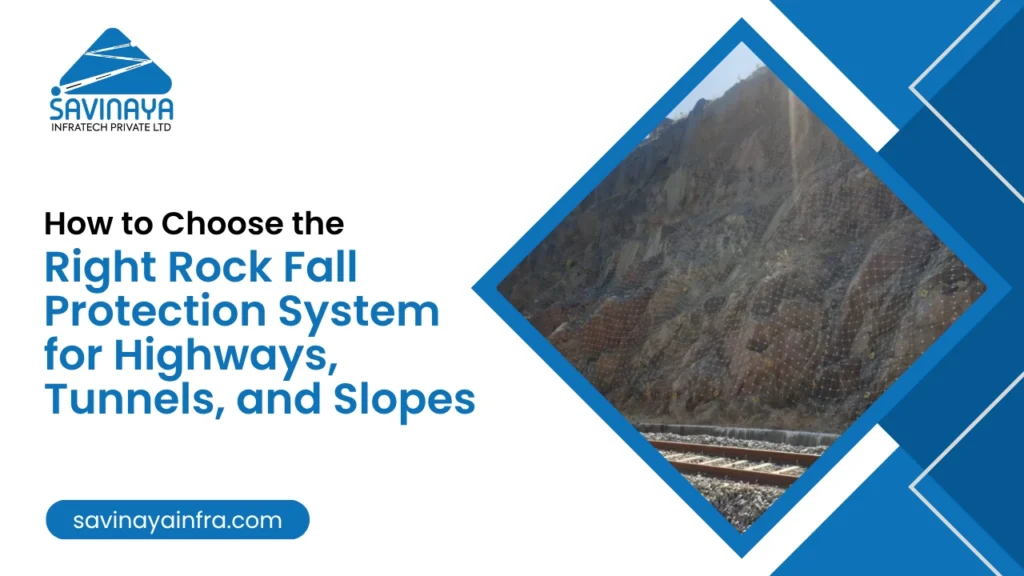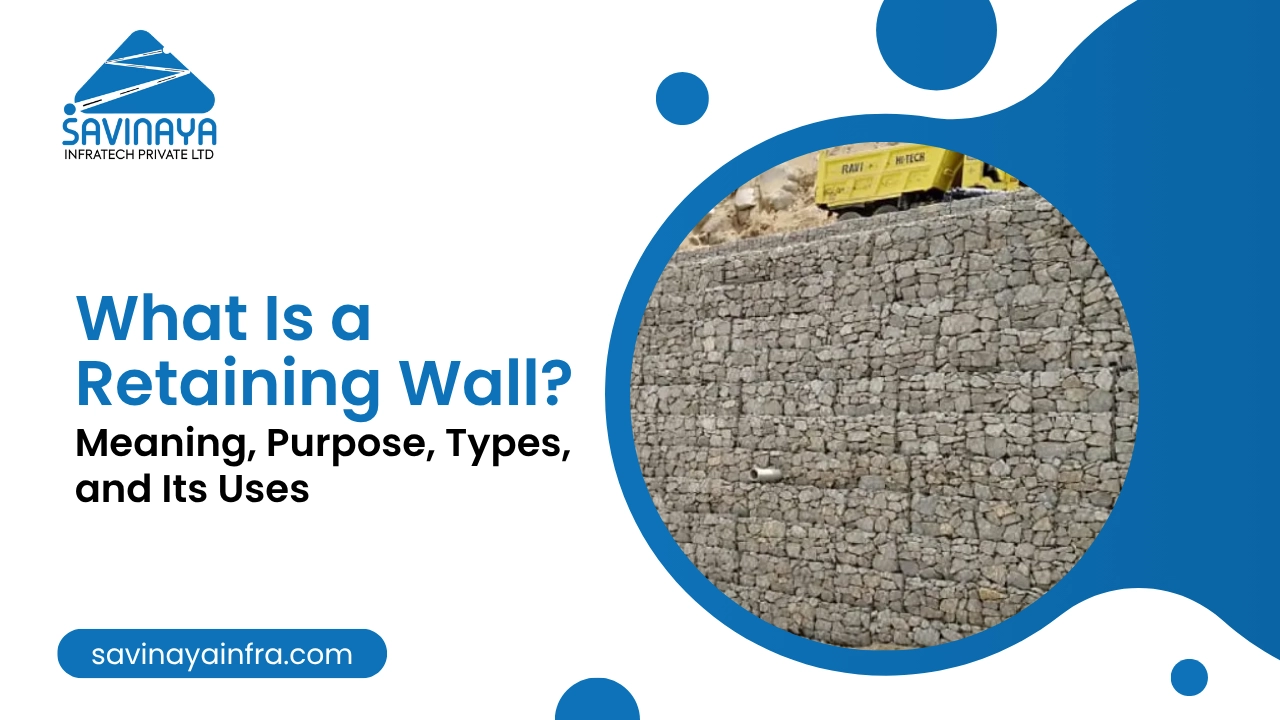Every cliffside highway, tunnel portal, or mountain road tells the same silent story: what holds the rock in place today might not tomorrow. Rockfalls don’t give warnings. They happen fast, hit hard, and leave serious damage behind. That’s why picking the right protection system is not just a line item in your project; it’s a long-term safety commitment.
But how do you actually choose a rock fall protection system when every slope, every project, and every budget looks different? Let’s break it;
Key Takeaways
- Rockfalls are sudden, dangerous events that threaten roads, tunnels, and people—especially in mountainous terrain.
- They’re triggered by weathering, water infiltration, slope cutting, seismic activity, and root pressure.
- Choosing the right system depends on slope geometry, rockfall energy, site access, budget, and surrounding infrastructure.
- Common solutions include rockfall netting, drape systems, debris flow barriers, and flexible or rigid impact barriers.
- Avoid mistakes like generic designs, poor energy assessment, and neglecting long-term maintenance.
Table of Contents
Common Causes of Rock Falls in Highways, Tunnels, and Slopes
Before selecting any protective solution, it’s important to understand what causes rocks to break free in the first place. The more you know about the triggers, the better your chances of picking the right system.
1. Weathering
Constant exposure to rain, wind, and temperature changes can weaken rock faces, causing small cracks to grow and eventually break apart.
2. Seismic Activity
In regions prone to earthquakes or even mild tremors, vibrations can loosen large rock masses.
3. Water Infiltration
Rainwater or groundwater entering rock joints can cause expansion, contraction, and weakening from the inside out.
4. Slope Excavation
Road construction or tunnel work near rocky areas often disturbs the natural balance, creating instability.
5. Vegetation and Root Pressure
Plant roots can grow into cracks in rocks, widening them over time and increasing the risk of sudden falls. Each of these conditions plays a role in why rockfall protection for highways, tunnels, and slopes is not a luxury — it’s a necessity.
Tips to Consider When Choosing the Right Rock Fall Protection System
Not all projects need the same solution. A mountain tunnel won’t face the same risks as a roadside slope or open-pit mine. So how do you choose rock fall protection system options that actually work for your site?
Here are key tips to guide your decision:
1. Understand the Slope Geometry
Evaluate the height, angle, and type of rock face. Steeper slopes with loose rock debris will need different systems than vertical cliff faces.
2. Measure Rockfall Energy Levels
Estimate how much energy a falling rock might generate. This helps you select rock fall protection barrier systems with the right strength and flexibility.
3. Site Accessibility and Maintenance
Some systems are easier to install and maintain than others. For remote areas, low-maintenance rock fall protection solutions are preferred.
4. Budget and Lifecycle Costs
Initial installation cost matters, but so does durability. The best rockfall protection methods are those that offer long-term reliability without frequent repairs.
5. Understand Project Type and Surroundings
A busy highway needs different protection compared to a railway line or tunnel. Consider traffic volume, environmental impact, and space availability.
Here are common systems used:
- Rockfall Netting: Helps secure loose rocks in place, often paired with anchoring systems
- Debris Flow Barriers: Installed at the base of a slope to catch falling rocks and soil
- Drape Systems: Allow rocks to fall in a controlled path without hitting roads or structures
- Rigid and Flexible Barriers: These rock fall barrier systems absorb the impact of falling rocks and stop them before reaching vulnerable zones
Choosing the right system is part science, part experience, and Savinaya Infratech specializes in both.
Interesting reads: Rockfall Protection Systems: Meaning, Types & their Benefits
Common Mistakes to Avoid in Rock Fall Protection System Selection
Even the best intentions can lead to the wrong outcomes if you miss the basics. Here are common mistakes that can cost time, money, and safety:
1. One-Size-Fits-All Approach
Using the same solution for every site may seem efficient, but it rarely works. Each location needs a custom assessment.
2. Ignoring Long-Term Conditions
Some systems perform well in dry seasons but fail during heavy rains or monsoon. Don’t ignore seasonal changes.
3. Overlooking Maintenance Needs
A system that works today might fail tomorrow if not maintained. Some rock fall protection solutions require regular checks — be prepared for that.
4. Underestimating Impact Forces
If the barrier is too weak for the actual energy levels involved, it will collapse on the first hit. Always calculate impact energy accurately.
5. Delaying Action
Waiting for a rockfall incident before installing protection is risky. Prevention is always better than reacting to damage. Avoiding these mistakes can save both lives and resources. That’s why expert advice and a tailored solution are so important when planning any rockfall protection for slopes or infrastructure.
You may also read: How Rock Fall Protection Systems Help to Prevent Landslides
Conclusion
There’s no doubt about it: rockfalls are unpredictable, but your response to them shouldn’t be. Taking the time to carefully choose rock fall protection system options based on actual site conditions can make the difference between safety and disaster.
From busy highways to tunnel portals and open mountain slopes, every terrain needs thoughtful protection. And with the right strategy, you’re not just protecting structures — you’re protecting people.
Need Help Choosing the Right Rock Fall Protection System?
Not sure where to start? Savinaya Infratech has worked on some of the most complex rock fall protection projects across India — from high-altitude highways to steep industrial sites. Contact us today and make sure the next rock stays exactly where it belongs.


